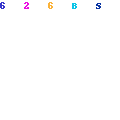
Friday, February 20, 2009
The Mcleave Gallery of Fine Arts

The McCleave Gallery of Fine Art (est. 2002) is a performance-based curatorial project consisting of a portable, nomadic suitcase art gallery available on a ‘by chance or appointment’ basis. Curatorial statements and exhibition themes vary from season to season as the gallery travels, accompanied by an attendant, presenting it in an adjustable manner, responding to the places that we are visit by attempting to participate in and honor our host cultures while sharing with them a small sample of our own.
OCAD Nomadic Residents

Nomadic Residents – International Artist Residencies at OCAD
Nomadic Residents aims to inspire and influence the OCAD community by featuring artists from around the world whose work questions issues such as travel, mobility, displacement, dislocation, and homelessness, as well as the speed or instability of modern life.
In bringing innovative and diverse artists to take up temporary residence at OCAD, Nomadic Residents will join here to there, the local to the global and the provisional and the permanent.
Islands Fold Residency

A small invitation only residency in a couple's house on Vancouver island with a focus on collaborative book making and healthy nutritional feasts.
Islands Fold™ is an independent publisher and artist residency created and operated by Angela Conley and Luke Ramsey. It's about inviting artists into our home, supporting creative identity, collaborating, promoting health and well being and producing unique art. Established on Pender Island B.C, Canada in the Spring of 2006. For the first two years, Islands Fold has offered residencies to artists at no charge. Due to rising expenses and no grant funding, we now offer the residencies by donation to any amount an artist feels comfortable with. Our residencies are also sustained from public support by purchasing the art and publications made available online. We are also supported by generous art donations from artists who believe in our cause.
We rent the house we live in, so we keep things simple by only having one guest stay with us. Selling art online is the business side of Islands Fold. The residency is not a business, but a way to make friends and art.
Islands Fold personally invites artists. We are not currently taking submissions. Thanks for your interest.
A Documentary on Islands Fold:
Islands Fold from chris shier on Vimeo.
Leighton Artist's Colony - Fishing Boat Studio


Designed by
Richard Henriquez, Vancouver
Floor dimensions:
2.5 metres wide x 10 metres long
Thursday, February 19, 2009
History of artist-in-residence programs
History of artist-in-residence programs
It seems that we are currently dealing with a fashionable phenomenon that owes its explosive growth solely to globalization of artists’ ‘nomadic’ behavior. However, artist-in-residence programs have not appeared out of the blue. The phenomenon has been part of the international art world for over a century.
In any case, the artist residency appears to have arisen from two streams.
1. Those who wish to bring artists into their environments, so as to 'humanize' them, or to extend research and development outside of traditional fields.
2. Those who wish to provide solitude, space, resources for artists.
1900 First development of artist in residence programs
The first wave of artist-in-residence programs came at the beginning of the last century. Often founded by art-loving benefactors or corporations, they regarded offering guest studios to individual artists as a new kind of patronage. On the other hand, residencies founded by artists were run on their own terms: a sense of community was very prominent in these artists' colonies. Both models were typical of a lot of other artist-in-residence programs which were set up during the first decades of the 20th century, both in the United States and Europe.
The University Residency was intended to humanize the university and allowed for interdepartmental hybridity or persons able to float through resources.
1960 Second development of artist in residence programs
A new wave of artist-in-residence programs emerged in the 1960s, adding two new models to the ones that already existed. One new model offered artists the opportunity to withdraw temporarily from a society which was considered bourgeois. They preferred to create their own utopia in seclusion. The other new model, on the other hand, tried to contact the public and aimed for social engagement: guest studios in villages and cities served as a base for society change.
1990 Globalization: new wave of artist in residence programs
As from the nineties a third wave of residency programs proliferated all over the globe: from Brazil to Taiwan, from Estonia to Zambia, from Japan to Vietnam. Characteristic of this new wave is the rich diversity of residency models: from not required hospitality at one end of the spectrum, to almost commission-like projects at the other end of the spectrum. Because of its global expansion and its seemingly unrestrained popularity, these new artist-in-residence opportunities have attracted more attention in the art world. However, we must not forget that new residency opportunities do have their historical roots. Neither should we forget that the 'old', established programs are still offering their expertise, contacts, advice and support to the new opportunities.
The Nomadesk's Historical Situation
The Nomadesk Writer's Residency intends to fulfill both of the primary models set forth. It first provides space and resource to the writer, fulfilling the studio/office-like needs. It secondly inserts writers into the public space, often absent of authors. By extending the studio into public space I intend to provide both resource & spectacle, and alleviating or intensifying myths of writers-in-solitude. Lastly, while the residency is intended to be nomadic and wandering, it is, in this case, conatined to The Island of Montreal.
Sunday, February 15, 2009
Katie Bethune-Leaman “Mushroom Studio”
 Katie Bethune-Leaman will occupy this mushroom-shaped artist studio for the next year in Toronto's Sculpture Garden.
Katie Bethune-Leaman will occupy this mushroom-shaped artist studio for the next year in Toronto's Sculpture Garden.Presumably the point of all this is to probe the rarefied place of the artist in the contemporary city: a figure who at times is officially licensed to explore realms of kitschy, childish creativity, but is often objectified in the process.
Found here: Eye Weekly
Wednesday, February 4, 2009
The Mobile Museum

human powered, bicycle transported, and Open Content-perhaps one of the only physical museums in existence that boasts this combination! Our goal is to generate new insights, possibilities, and appreciation for individual interpretation of information via visual forms. The Mobile Museum recognizes museums as valuable structures for learning about the world around us- unfortunately, they are becoming quickly outmoded as information access shifts to more accessible and malleable forms. What to do?
Here's one solution. An evolution!
The Mobile Museum offers a fusion of resources to keep the idea of museums afloat:
The Museum: A means of display and input + Open Content Information Resources: You take the cart, you share the artwork or invention, you pass on the idea that others can do the same!
Portable Theater

2007 Stormy Weather is a hand-cranked portable mini-theater intended to function as a device for busking in city spaces. Passers-by are invited to peek through an opening in the front and watch a small tornado pass though a tiny city. Stormy Weather is an experiment in creating an alternative economic model for a fine artist to explore an economic niche.
Wikipedia's Variety of Desks
Desk forms
- Armoire desk
- Bargueno desk
- Bible box
- Bonheur du jour
- Bureau a gradin
- Bureau plat, see Writing table
- Bureau Mazarin
- Butler's desk
- Carlton house desk
- Carrel desk
- Cheveret desk
- Credenza desk
- Cubicle desk
- Cylinder desk
- Davenport desk
- Desk and bench
- Desk on a chest
- Desk on a frame
- Drawing table
- Ergonomic desk
- Escritoire
- Fall front desk
- Fire screen desk
- Lady's desk
- Lap desk
- Lectern desk
- Liseuse desk
- Moore desk
- Partners desk
- Pedestal desk
- Plantation desk
- Rolltop desk
- Secretaire en portefeuille
- Secretary desk
- Slant top desk
- Small desk
- Spasta desk
- Spinet desk
- Standing desk
- Tambour desk
- Telephone desk
- Trestle desk
- Typewriter desk
- Wooton desk
- Writing armchair
- Writing desk
- Writing table
Desk types
- Bunk bed desk
- Campaign desk
- Computer desk
- Field desk
- Games table desk
- Mechanical desk
- Metamorphic library steps which sometimes were meant to be transformed into a writing table
- Patent desk
- Portable desk
- School desk
- Student desk
- Rolling desk
See also these specific desks
History of "The Portable Writer's Desk"

From: Suite101
During the middle-ages, when the vast majority of the population of Britain was illiterate, there was little need for a specific piece of furniture for writing or reading. Only the monks, who laboured away copying and recopying holy books and stories had pulpit like writing tables. However, as the middle-ages drew to a close, both literacy and leisure-time increased among the wealthy classes.
By the dawn of the Georgian age, letter writing had become popular among the upper-classes and was often used as a means to spread political discourse. Stories were written in letter form, and many letters were printed in magazine and newspaper like publications. To aid in this new activity, a new piece of furniture became popular.The writing box, or portable writing desk, was a hinged rectangular box that when unfolded provided a continuous slope upon which to write. It also normally contained an area where quills, ink-bottles, and paper could be stored.
Today, some of the spirit of the writing box lives on in the laptop computer.
Primary information for this article obtained from Portable Writing Desks by David Harris, Shire Publications, 2001.
Tuesday, February 3, 2009
The Cloche Gallery
Matthew Forbes, the curator, mails this glass cloche to artists, where they use it as the central component in a site-specific exhibition.
INSTRUCTIONS FOR ARTISTS
The glass cloche is provided to artists upon request. The artist is free to make a piece of art, with the cloche being an integral element in the piece. Contact me to request The Cloche or for more instructions.
matthewsforbes@gmail.com



